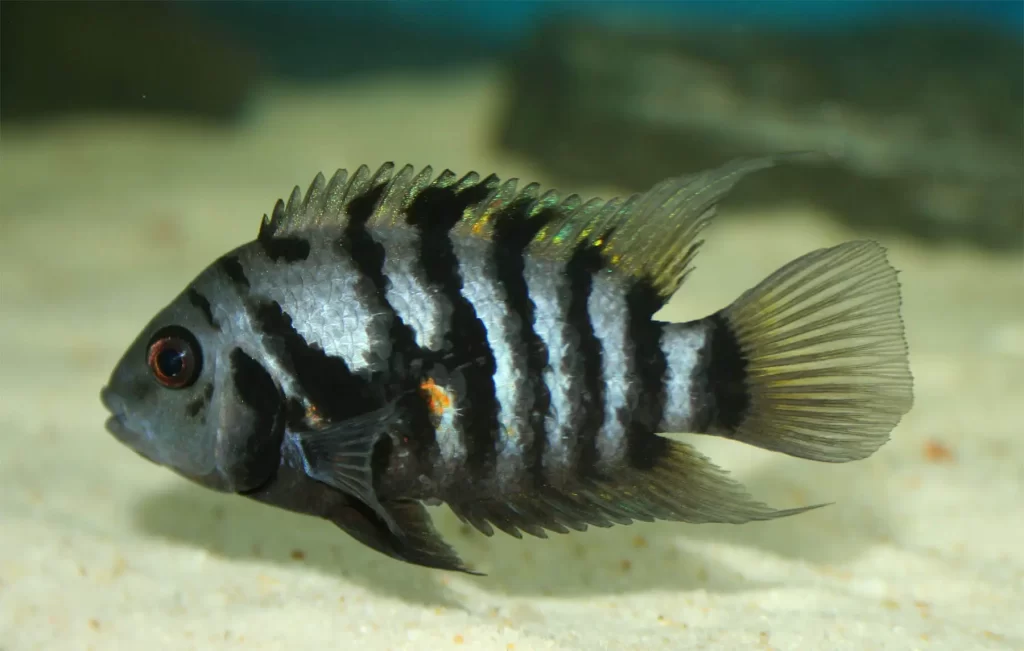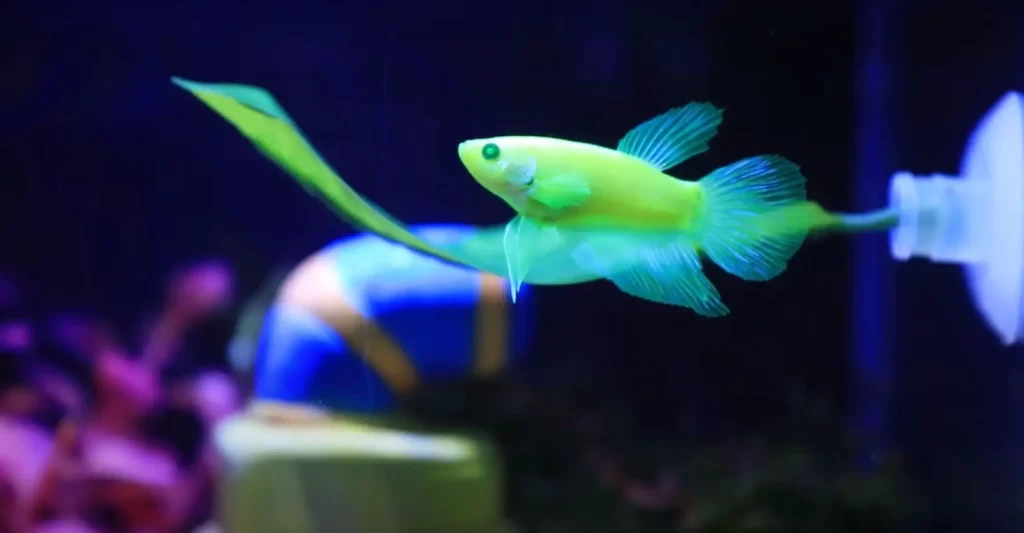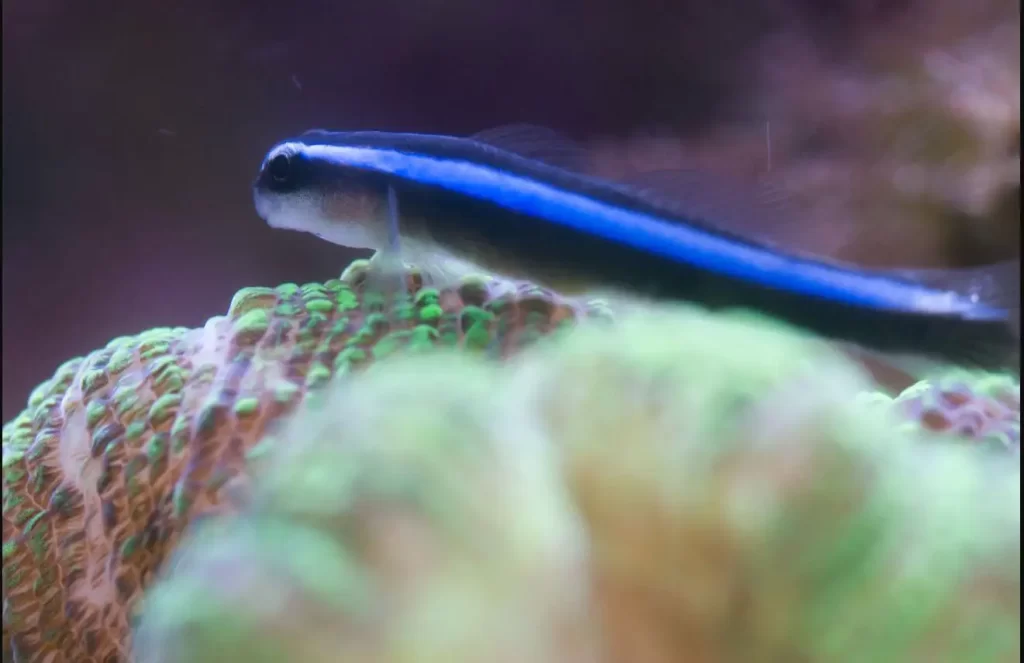Medaka fish (Oryzias latipes), is one of the best-looking fish for their size and monotony of their color. Even the plain white, brown color on most of these fish looks great in my opinion.
Medaka fish is also popularly known as the Japanese rice fish. They are tiny fish with single color do make out on their personality. These fish are never so timid and shy in your aquarium.
Often Medaka fish are confused with guppies as they have quite similar body shapes. The Japanese rice fish behave similarly to guppies as well but are not livebearers as the guppies.
Medaka fish would be an absolute gem to keep in a small planted tank. The only issue with it would be its availability. It’s a pretty interesting fish that might have come across you in your books if not in your tanks.
Introduction of Medaka Fish
Medaka fish (Oryzias latipes) is also known as Japanese rice fish. And Japanese rice fish are some of the most common fish kept by the hobbyist in Japan. And the fish is quite hard to find in any country other than Japan. These fish are native to Japanese waters and are usually found in rice fields and paddy fields, thus given the name Japanese rice fish. The Japanese rice fish come in varieties of color and are not that big, so providing it with enough space to swim won’t be that big of a problem for you.
Origin
Medaka fish are found in the rice and paddy fields in East Asia. These fish are native to Japan.
Medaka fish can thrive both on freshwater as well as on brackish waters, thus being one of the few euryhaline fish. These fish are also found in Korea and China but are predominantly found in Japan.
Fish Appearance
Medaka fish or the Japanese rice fish have a streamlined body and also resembles a small grain of rice. They don’t grow that big and at the adult size, they reach the length of 1.5 inches or 3.5 centimeters.
Medaka fish comes in various colors, and are usually seen in white orange and shades of yellow.
Availability
Finding Medaka fish can be quite a hectic job to do. Most of the local fish store won’t have a stock of medaka fish and when they do these fish tend to get cleared off the shelf pretty quick.
Ordering from the internet can be an option. You might have to pay a hefty price if you’re thinking to order it from the internet.
As the Japanese rice fish breeds pretty easily you might have a better chance of getting these fish in your locality through your local fish breeder.
If I were to find these fish in any local fish store, I would fill up my tank as soon as possible with the Medaka fish.
Price
Medaka fish are reasonably priced if you get it in your local fish store and might find a better deal if you seek a local breeder.
A pair of Medaka fish tends to go for about 7-8 $. The price may vary from store to store and also depends on the season.
I had a hard time finding these fish in the winter. The price in the winter also goes up by quite a bit. And if you’re from the East Asian countries you’re in good luck as you can score the fish for very affordable prices, and in some cases even cheaper than guppies.
You can get a school of 10 medaka fish for $50.
Lifespan
In the wild Medaka fish or the Japanese rice, fish are seasonal fish. They have a short life span of about 2 – 3 years.
The lifespan of Medaka fish is short so they reach their sexual maturity faster than the other fish.
And in captivity, Medaka fish tend to live for up to 1.5 years to 2 years.
Sexual Difference
Sexing medaka fish can be tricky at times but usually, the males can easily be separated from the females.
You can identify the male fish as they have more slender and streamlined body while the females and round.
The interesting thing about these fish is its sex is determined genetically like in us humans, thus in some countries, this fish is used to explain gender. Male fish have genetic makeup as (X Y) and the female medaka fish has a genetic makeup of (X X).
Social Behavior And Tank Mates
Medaka fish are not predatory at all and also are small in size so keeping them with aggressive or predatory fish wouldn’t be possible. Medaka fish go along with every other fish of their sizes or even with larges fish that aren’t aggressive to their tank mates. Adding colorful guppies would add contrast and vibrancy to your tank.
You also can stick with a theme and add similar color fish. Some of the fish that do the best with Medaka fish are the other species of Medaka fish, Guppy, Molly, Tetras, etc.
Fishkeeping Difficulty
Medaka fish are some of the easiest fish to breed that is currently available in the market. They are as easy as keeping and breeding guppies if not easier.
You’ll only have to feed it with good quality food and do the regular water maintenance to watch it thrive in your aquarium.
Tank Size
Medaka fish thrive in a smaller aquarium with enough room to swim and enough filtration to provide them with good water conditions. You shouldn’t be concerned about getting a larger tank. I would suggest you get an aquarium that is 10 gallons or above.
10 gallons can house about 5 fish and with every additional fish, I would suggest you increase the tank capacity by 1 gallon. E.g. You can keep 10 medaka fish in a 15-gallon tank (10 gallons for the school of 5 and 1 gallons each for the added number of fish.)
Lightings
Medaka Fish don’t prefer bright lights. If you have a bright light in your tank, you might want to consider providing your fish with numerous hiding spaces throughout the tank.
You should use a dim light in the tank housing medaka fish. The dim light will ensure that your fish doesn’t get stressed.
Substrate and Decoration
Almost any substrate will do, the substrate provides a good housing environment for the beneficial bacteria in your tank, thus adding substrate in your tank is important in running a healthy tank.
Substrates without any sharp and pointy edges will serve its purpose right. I would suggest you add any good aquarium soil just in case you’d like to plant the tank later. And if you do so as a caution don’t forget to check the water parameters as they might alter a bit to stay in the safe hand. You will have to perform several water changes to bring the water parameters to a constant level. After you do so you can cycle the tank and add the Medaka fish.
Fish Diet
Medaka fish aren’t picky feeders at all. They will accept anything you offer to them. Many companies specialize in preparing fish food entirely dedicated to medaka fish. Various local Japanese companies produce them in mass quantities.
If you have a hard time finding them a well-known brand named Hikari produces Medaka fish food. These foods are not necessary for the fish. But it will provide the fish with all the nutrients they require in their daily diet and promote quick growth of the Medaka fish.
Maintaining Water Quality
Maintaining the water quality in your tank is as easy as your daily chorus. Just take a siphon or your trusted bucket and remove 30% of water and then refill the tank with the same amount of dechlorinated water.
Water Temperature
In its natural habitat, the water has a wide range of temperatures throughout the year. In the cold winters, the water temperature drops as low as 4°C to as high as 30°C in the warm summers.
However, in your tank, you should keep the temperature between 24°C to 28°C. The major thing that you should keep in check is the constant temperature of water regardless of the degree of temperature.
Water ph
There is no exact range of pH for the Medaka fish. However, your fish will thrive in an optimum environment which has a pH of 5.5 – 7.0.
So you can set the pH of your tank water anywhere from 5.5 to 7.0. This pH is pretty obtainable and your fish will thrive in this range of pH.
Water Filtration
Medaka fish are relatively small fish and so produce relatively small amounts of biological waste compared to other big fish.
As Medaka fish are found in shallow felids they prefer slower moving water with very low to no water current. A sponge filter will serve its best purpose on a Medaka fish tank, but you also can use a slow-flowing hang on the back filter. You can also use a small powerhead filter for your Medaka fish.
You should keep in mind that the water flow should be slow and the water current should be weak.
Water Maintenance
Water maintenance shouldn’t be that big of an issue for you in the tank holding Medaka fish. Regular water changes, running a good filtration system and checking the water parameters every now and them should be enough for you and your fish. Doing these steps in a regular interval of times should help you keep the water of your tank crystal clear.
Fish Disease
Medaka fish are immune to many diseases. As it doesn’t give birth to live fry, it is immune to live bearer’s disease and also resist the bending spine disease. But it not completely immune to all diseases.
In poor water conditions, you might encounter some medaka fish with ich disease as a result of stress. Medaka fish will also get fin rot disease in extreme water conditions. Many types of researchers induce Parkinsonism in this fish which is a dopamine deficient disease. It is done for research purposes and to find a cure for Parkinsonism disease. This fish has a huge role in scientific research and medical purposes.
Breeding Medaka Fish
Medaka fish are some of the easiest egg-laying fish to breed. I would strongly suggest you try this fish out for this purpose.
If you are into breeding and want to try anything rather than livebearers, medaka fish should be your first choice. Breeding medaka fish is as easy as any other livebearers.
For an increased rate of survival of fry, I would suggest you set up a different breeding tank with a lot of moss or a breeding mop which is commercially available.
Adding a lot of live plants is also a good precautionary measure.
You can prepare the breeding pair beforehand by feeding them with food having higher protein content.
Increasing the temperature of water in the breeding tank will also induce an effect that makes the fish breed faster and readily.
Female fish carrying eggs usually have a rounder and wider stomach. The male medaka fish chase the female fish around the tank to prepare for the breeding ritual. The female medaka fish lay the egg which gets stuck in its anal fin behind the anal pore which is then fertilized by the male medaka fish which then after fertilization falls and gets attached to the plants.
The eggs of Medaka fish are round and clear, you can remove the egg from the breeding tank you can hatch in another inventory or the parents can be removed from the tank.
The eggs hatch in about 22 hours and small fry appear laying in the plants or sticks to the glass surface. they are not able to move and swim properly. After 18-24 hours they can freely swim and start scavenging for food on the surface of the tank. And you should give it a try in breeding these beautiful fish.
Caring For the Fries
Caring the fish fry of medaka fish is pretty easy. You will only have to do a regular water change and add live plants if there isn’t any.
The more often you change the water the faster it grows. So I’d recommend you to change 30% of the water every other day until the fry can withstand the flow of a small sponge filter.
The Medaka fish fry is very small so they tend to munch on the biological biofilm already present in your tank. You can also feed the fry with baby brine shrimps or artemias to promote good growth of the fish.
Summary
Medaka fish are some of the best fish to keep if you want to step into breeding egg layers. These fish are easy to take care of and also thrive under normal water conditions and don’t demand pristine water conditions.
If you’ve been breeding guppies and keeping them, and want something else than guppies the next good step for you definitely would be the Medaka fish. Medaka fish is also perfect for a nano tank or a planted cube tank. A pair of Medaka fish would also look quite good in your tabletop planted tank.






